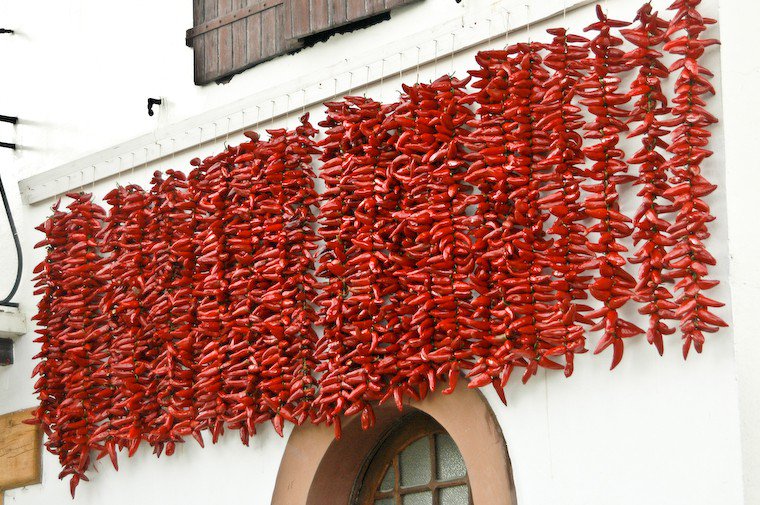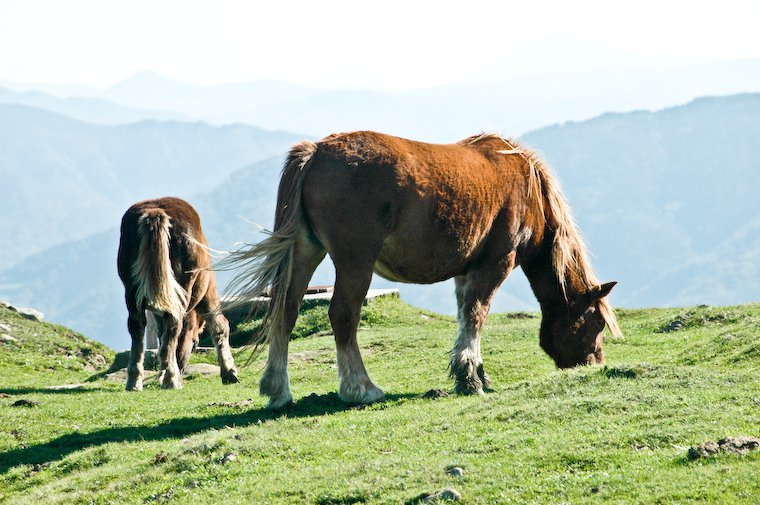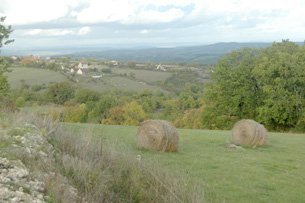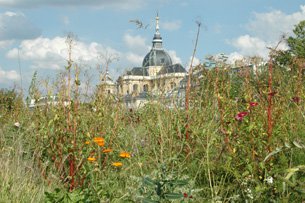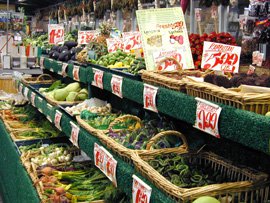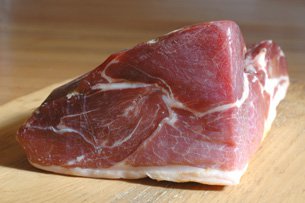
[Ham from the Aldudes Valley]
In the galaxy of first-class hams, this one most definitely deserves its place. It is made by 60 producers in the beautiful valley of Les Aldudes in the Pays Basque, from a specific breed of pig called le porc basque.
This pig, which sports a pretty pink and black outfit, almost didn’t make it through the twentieth century: from 140,000 individuals in 1929, the headcount had dwindled down to a dramatic twenty by 1981, when the species was officially declared endangered by the French ministry of agriculture.
A few years later, a group of farmers from Les Aldudes, led by Pierre Oteiza, decided to save the basque pig from oblivion and return to traditional methods of breeding and salting. Their action gradually raised the number of pigs and sows, more farmers joined the cause, and in 1995 the porc basque was officially declared out of the woods.
This is just a manner of speaking because the basque pig is in fact destined to spend most of its life up in the mountain forests, where it feeds on grass, roots and the dried fruits that fall from the trees — chestnuts, acorns and beech nuts (faîne in French, which I’m sure you’ll be as happy to learn as I was) — in addition to a mix of non-GMO grains delivered to the herd daily. At 12 to 14 months, the pigs are taken back down to the valley for a somewhat less pleasant episode, which I won’t expand upon.
Their legs and shoulders are then salted with natural salt harvested around Bayonne (200 million years ago this area was beneath sea level), rubbed with pepper, exposed to the mountain winds to dry, and aged for 12 to 16 months.


